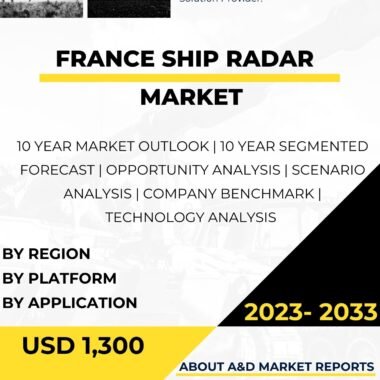Description
India’s involvement in the Global Underwater Loitering Reconnaissance System (ULRS) market signifies a forward-looking approach to maritime defense and surveillance. ULRS is a revolutionary technology that combines the capabilities of unmanned underwater vehicles (UUVs) and reconnaissance systems to conduct persistent surveillance, reconnaissance, and data collection beneath the sea. India’s investment in this emerging market reflects its commitment to enhancing maritime security, protecting its extensive coastline, and monitoring its maritime interests.
ULRS systems provide a game-changing advantage in underwater reconnaissance and surveillance. These autonomous underwater vehicles can operate for extended periods, loitering beneath the surface, and collecting valuable data in real-time. India’s adoption of ULRS technology enables it to maintain an unblinking eye beneath the waves, enhancing its maritime domain awareness and providing early warning capabilities against potential threats.
One of the primary applications of ULRS is in anti-submarine warfare (ASW). India’s vast maritime interests and its extensive coastline make ASW capabilities critical. ULRS systems equipped with advanced sonar and detection capabilities allow India to detect, track, and monitor underwater threats, including submarines, thereby safeguarding its maritime boundaries and maintaining control over vital sea lanes.
Furthermore, ULRS technology offers substantial benefits for intelligence, surveillance, and reconnaissance (ISR) missions. These systems can gather valuable data on underwater terrain, monitor maritime traffic, and detect any anomalies or illicit activities beneath the sea. India’s utilization of ULRS enhances its ability to monitor its maritime interests effectively, including offshore assets, Exclusive Economic Zones (EEZs), and critical maritime infrastructure.
Collaboration with international partners and technology providers is a pivotal aspect of India’s approach to ULRS. These collaborations facilitate technology transfer, knowledge exchange, and the development of interoperable systems, ensuring that India remains at the forefront of ULRS advancements. Additionally, such partnerships strengthen India’s maritime security capabilities while promoting international cooperation in safeguarding the world’s oceans.
Moreover, India’s strategic location in the Indo-Pacific region emphasizes the significance of its investments in ULRS. With evolving security dynamics and potential challenges arising from regional and global actors, India’s proactive approach to adopting ULRS technology strengthens its role in ensuring regional stability, maritime security, and the protection of global trade routes.
In conclusion, India’s active participation in the Global Underwater Loitering Reconnaissance System market underscores its dedication to enhancing maritime security, surveillance, and reconnaissance capabilities. ULRS technology offers innovative solutions for underwater domain awareness and anti-submarine warfare, aligning with India’s goals of protecting its maritime interests and ensuring regional stability. By investing in this technology and fostering international collaborations, India positions itself as a responsible and capable player in the evolving landscape of maritime defense and security applications.




